The Great Migration: Serengeti’s Spectacular Wildlife Drama
The Serengeti Wildebeest Migration is one of the most dramatic natural events on Earth. Over 1.5 million wildebeests, accompanied by hundreds of thousands of zebras and gazelles, undertake a cyclical journey across the Serengeti in Tanzania and the Maasai Mara in Kenya. This phenomenon is driven by seasonal rains and the pursuit of fresh grazing land. Each year, the wildebeests move in a clockwise pattern, traversing nearly 3,000 kilometers, following the rains that rejuvenate the dry plains.
The migration isn’t just a single event, but a continuous movement of herds in search of sustenance, facing dangers along the way. It’s a true spectacle of life and death, with predators such as lions, cheetahs, and crocodiles lying in wait for the opportunity to prey on weaker or distracted animals. While the journey offers no respite, it is essential for the survival of the wildebeest species and the ecological balance of the region.
The Serengeti Plains: Heart of the Migration
The Serengeti, meaning “Endless Plains” in Maasai, is a sprawling savannah that stretches over 30,000 square kilometers. It is one of the most famous ecosystems in the world, and for good reason. The region provides the perfect backdrop for the migration, offering both abundant grazing and a stage for nature’s most impressive displays of survival. The wildebeests begin their journey from the southern plains of the Serengeti, where calving season takes place between January and March. This is a time of renewal, with the birth of around 500,000 calves.
Despite the abundance of life, danger is never far. Calving season attracts predators, and the Serengeti plains become a hunting ground for lions, leopards, and hyenas. The vastness of the Serengeti and the unending waves of wildebeest ensure that the migration is a story of both peril and resilience.
Crossing the Grumeti River: A Battle for Survival
One of the most perilous sections of the wildebeest migration is the crossing of the Grumeti River. Located in the western corridor of the Serengeti, the river presents an obstacle where strong currents and predators await. Crocodiles, some of the largest in Africa, lie in the murky waters of the river, waiting for the wildebeests to make their move.
The herd gathers on the banks, hesitant and restless, until one bold wildebeest takes the first leap. Once the crossing begins, it becomes a frantic race to the other side. The strong currents can sweep away the weaker animals, and the waiting crocodiles strike with deadly precision. This moment in the migration is both a harrowing challenge and a defining spectacle of nature’s unrelenting cycle.
Predators of the Serengeti: A Constant Threat
Throughout their migration, the wildebeests face constant danger from predators. Lions, the kings of the Serengeti, stalk the herds, often picking off vulnerable individuals. Cheetahs use their unmatched speed to chase down isolated calves or stragglers, while leopards prefer the cover of trees and bushes to ambush their prey. Hyenas and wild dogs work together in packs, using their numbers to overwhelm their targets.
The sheer size of the migrating herd means that predators always have an opportunity for a meal, but it also allows the wildebeests some safety in numbers. Each predator has its unique strategy, and the ongoing battle between predator and prey forms the backbone of life in the Serengeti.
The Northern Serengeti: The Final Push to the Mara
As the rains begin to taper off in the Serengeti, the wildebeests move north towards the Maasai Mara in Kenya. The northern Serengeti is characterized by a mixture of woodlands and open plains, making it an ideal habitat for grazing animals. However, this part of the journey also presents some of the harshest challenges.
The Mara River, separating the Serengeti from the Maasai Mara, is the final major hurdle. Like the Grumeti, the Mara River is home to large populations of crocodiles, but it also has treacherous cliffs, making the crossing even more dangerous. The wildebeests must navigate steep banks, fast-flowing waters, and the ever-present threat of predators lurking nearby. For many, this final push will be their last.
The Great Mara River Crossing
The Mara River crossing is perhaps the most iconic scene of the entire migration. As the herds gather on the riverbanks, the tension is palpable. They wait, sensing the danger, before finally launching themselves into the water. The river becomes a maelstrom of splashing, struggling animals, some making it across, while others fall victim to the current or the jaws of the waiting crocodiles.
For the survivors, the Mara River crossing signals a momentary relief. The Maasai Mara offers rich grazing lands, allowing the wildebeests to regain their strength before beginning the return journey to the Serengeti when the rains come again.
The Role of Rains: The Invisible Guide
The driving force behind the migration is the rain. The wildebeests follow the rains in a perpetual quest for fresh grazing lands. The timing of the rains dictates the movement of the herds, with the wet season triggering the growth of new grass in the southern Serengeti. When the dry season begins, the grazing becomes sparse, and the wildebeests must move northward in search of food.
This reliance on the rains creates a migration that is both predictable and unpredictable. While the general pattern remains consistent, variations in rainfall can cause changes in the exact timing and routes of the migration, adding an element of uncertainty to this natural phenomenon.
Calving Season: A Time of Renewal and Danger
The beginning of the year marks the calving season in the southern Serengeti, where hundreds of thousands of wildebeest calves are born within a few weeks. This synchronized birth offers the newborns a better chance of survival, as predators are overwhelmed by the sheer number of potential targets. The lush grasses of the southern plains provide the perfect environment for the young to take their first steps.
However, the large number of vulnerable newborns also attracts predators. Lions, cheetahs, and hyenas take full advantage of the abundance of prey, hunting both mothers and calves. Despite the risks, calving season is essential for the survival of the wildebeest species, ensuring that the migration continues for generations to come.
The Role of Zebras and Gazelles in the Migration
While the wildebeests are the stars of the migration, they are not alone on this journey. Zebras and Thomson’s gazelles also join the migration, forming a multi-species community. Zebras, with their strong teeth, feed on the tougher grasses, leaving behind shorter, more tender grass for the wildebeests. This symbiotic relationship helps both species survive the migration.
Thomson’s gazelles, though smaller in number, are faster and more agile, allowing them to evade predators more easily. Together, these animals form a dynamic and interdependent ecosystem, each playing a crucial role in the health of the Serengeti.
Human Impact and Conservation Efforts
While the wildebeest migration remains one of the most spectacular natural events, it is not without challenges. Human activities, such as agriculture, infrastructure development, and poaching, have impacted the migration routes over the years. Conservation efforts have been put in place to protect the Serengeti ecosystem, ensuring that the migration can continue uninterrupted.
National parks and wildlife reserves, such as Serengeti National Park in Tanzania and Maasai Mara National Reserve in Kenya, play a critical role in safeguarding the migration. Local communities, governments, and international organizations work together to preserve the natural habitats and minimize human-wildlife conflict. These efforts are vital in ensuring that future generations can witness the awe-inspiring wildebeest migration.
The Serengeti Ecosystem: A Delicate Balance
The wildebeest migration is more than just a movement of animals; it is a key factor in maintaining the ecological balance of the Serengeti. The grazing habits of the wildebeests help to maintain the grasslands, preventing overgrowth and promoting biodiversity. Their movement also redistributes nutrients across the ecosystem, supporting a wide range of other species.
In turn, predators such as lions and hyenas depend on the migration for their survival. Without the wildebeests, the predator population would decline, leading to a cascade of effects throughout the food chain. The migration is a testament to the interconnectedness of life in the Serengeti and the importance of protecting this unique ecosystem.
Witnessing the Migration: A Once-in-a-Lifetime Experience
For travelers, witnessing the wildebeest migration in the Serengeti is an unforgettable experience. The sight of millions of animals moving in unison across the vast plains is truly awe-inspiring. Visitors can experience different stages of the migration, from the calving season in the south to the dramatic river crossings in the north.
Guided safaris offer the chance to see the migration up close, with knowledgeable guides providing insights into the behavior of the animals and the challenges they face. Whether observing the tense moments before a river crossing or watching a predator stalk its prey, the wildebeest migration offers a front-row seat to one of nature’s greatest spectacles.


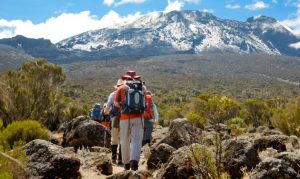
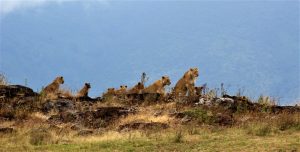
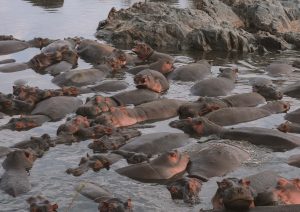
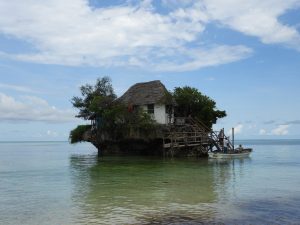

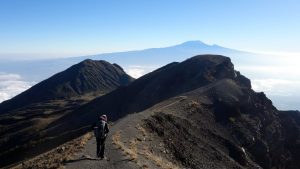
[…] many prefer planning their trips during specific seasons to witness iconic events like the Great Migration and the wildebeest calving season. To make the most of your safari, understanding when these […]